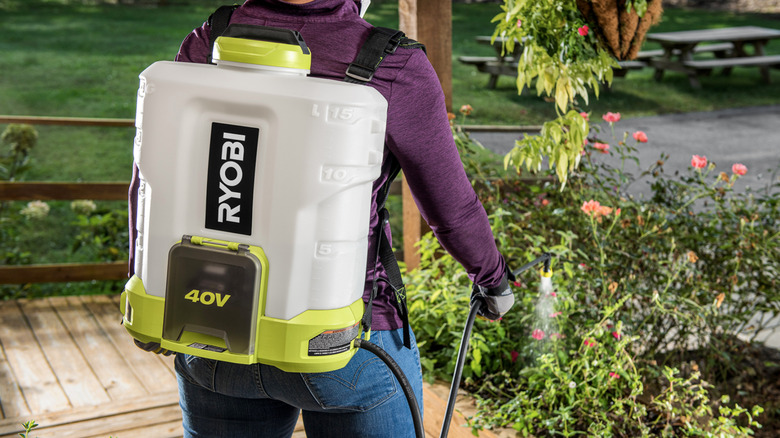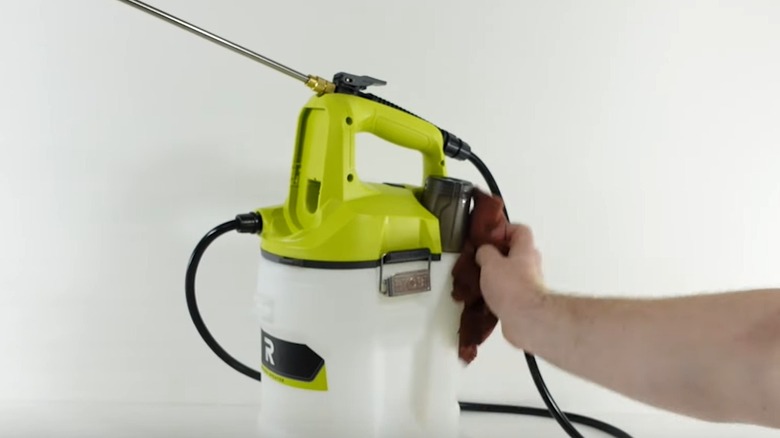The Right Way To Clean Your Ryobi Garden Sprayer Tank
We may receive a commission on purchases made from links.
When you want to efficiently apply liquid fertilizer, pesticides, or herbicides around your home, a garden sprayer tank is the best option. Starting with a manual pump product is common because it carries a lower price, but you might find this tool so convenient and handy that you want to switch to a battery-powered garden sprayer tank. Battery-powered units allow you to apply the liquid with precision and work without having to stop and manually pump the tank to generate pressure. When you want a powered unit, the Ryobi 40V 4-Gallon Cordless Backpack Chemical Sprayer kit is an option for $239 at Home Depot. Ryobi is one of the best power tool brands at Home Depot, and it generally provides good quality and performance across its tool lineup.
If you choose this unit, though, it's important to clean it properly after each use. Without cleaning it, you could have residue from whatever chemicals you used embedded in the tank, hose, or spray nozzle, contaminating it for the next time you use it. Failing to clean it could cause damage or clogs that ruin your investment in the sprayer tank. There are specific instructions you should follow to clean this unit properly. If the tool fails from misuse or neglect from improper cleaning or storage, it likely will not qualify for warranty coverage for Ryobi power tools. To prepare to clean the unit, you should wear eye protection and remove the battery. Continue reading for the specific steps to use to clean the 40V garden sprayer from Ryobi.
Steps to follow to clean a garden sprayer tank
Start the cleaning process by properly disposing of any extra liquid chemicals that remain in the tank. No matter what types of weed killer you're spraying in your yard, never store the excess chemicals in the sprayer tank. Pour enough clean water into the tank to fill it to between 1/4 and 1/3 of its capacity. You can add a little bit of mild household soap or detergent to the tank to help with cleaning it. Never use harsh, abrasive cleansers with the unit. Place the cover and housing back on and secure it. Then, reinstall the battery.
Operate the unit like normal, but spray the cleaning solution in a container to catch it, so you can dispose of it properly in case it contains any remaining chemicals. Continue spraying until the tank is completely empty, then repeat the process with clean water alone. Pour out any excess remaining water. Disconnect everything and allow it to drip dry for a few hours. Wipe down the exterior of the tank before placing it into storage.
To clean the nozzles and elbow wand, unscrew them from the hose. You can insert a fine needle inside the nozzle to loosen any debris stuck inside. If the elbow wand has debris, run a fine, stiff wire through it. Rinse the parts with water and wipe them dry with a cloth before reinstalling them. Cleaning this sprayer properly will ensure it's one of the Ryobi tools you can count on to clean up your yard quickly each time, no matter how infrequently you may use it.

